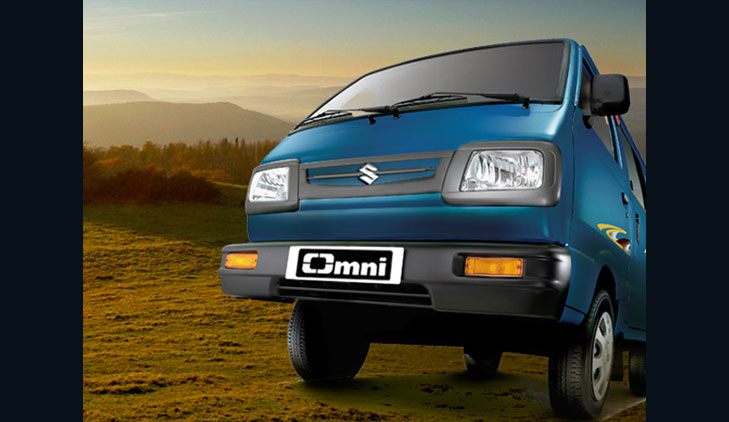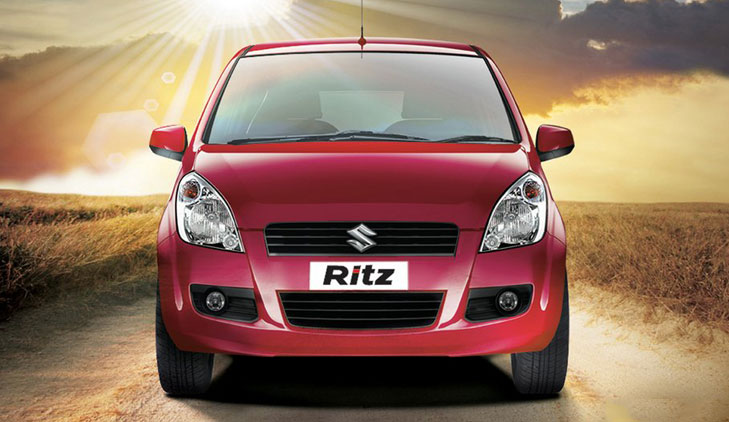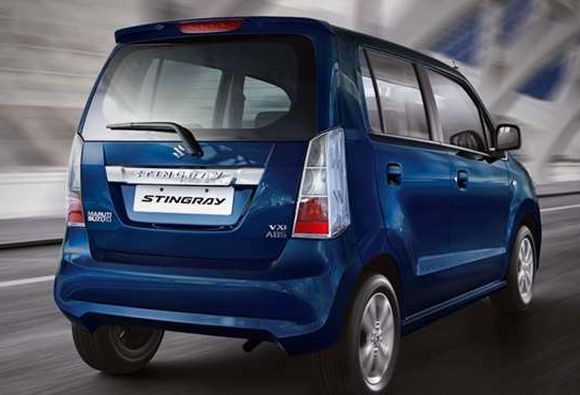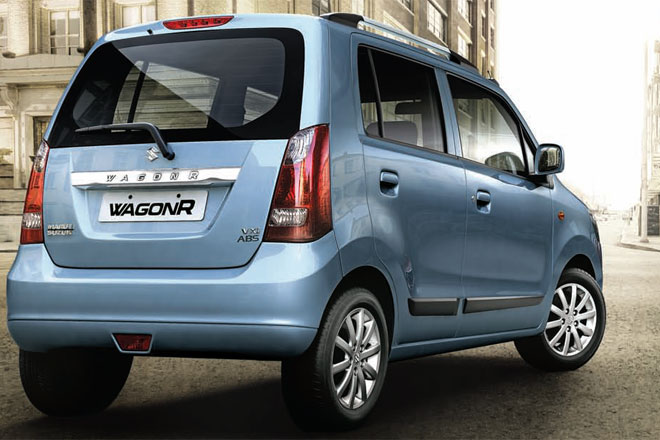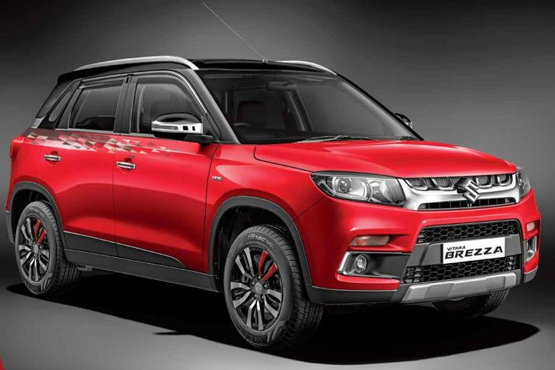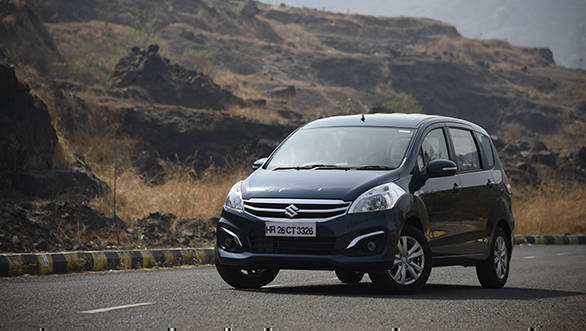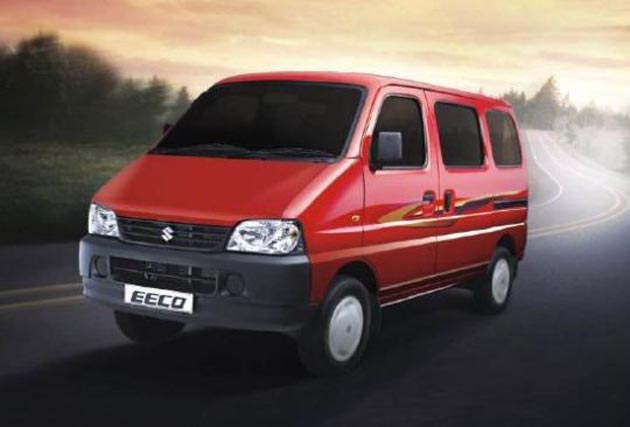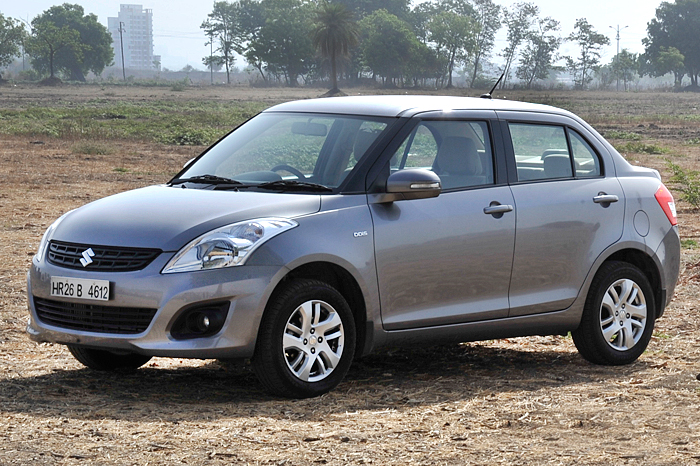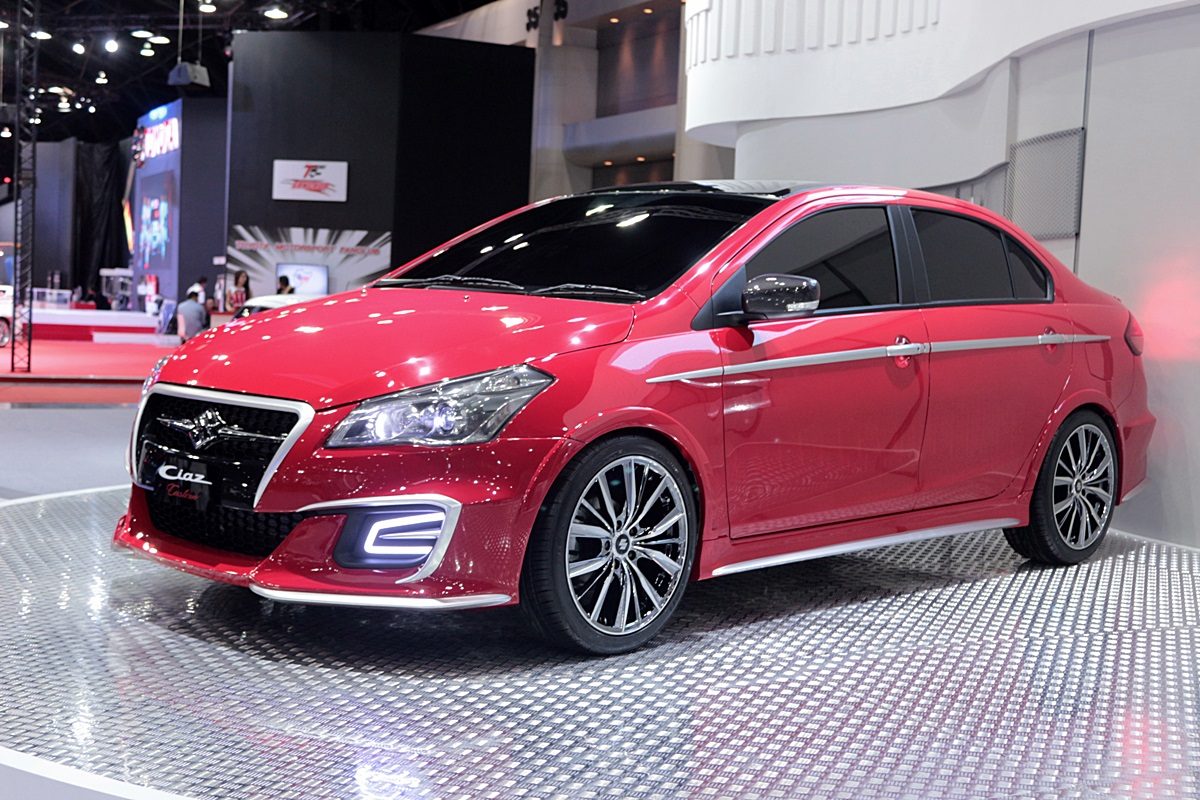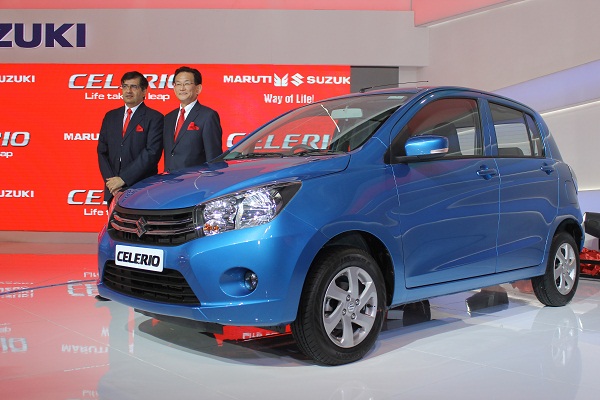Hello every one,
I am expressing my review about this great car after using it for 1,00,606 kms!!it is a perfect family car with good space and reliability..
my father owns this wonderful car since 2004..we traveled many long journeys (in gujarat, rajasthan,maharashtra!!!) but still now we never found any issue on highway (exceptionally tyare punchers) my dad decorated it with awesome interiors..and made special sofa seats inside,which gives really an awesome comfort.
i salutes maruti, who made very very reliable vehicle such-which gives awesome comfort!
# POSITIVE things :::
-very very specious! 8 person can easily travel with no stress (if u converts its seats in sofa, I bet u will forget INNOVA in comfort!!!)
-totally “0” maintenance vehicle..as my car clocked more than 1lac kms it needs just 4-5 thousands to spend on per year!
-very very cheap (my father bought it for just rs 2,60,000 on-road at 2004, now a days it’s just for 3,10,000!)
-very easy to handle in city traffic
-all time available parts
-the most reliable vehicle now a days in india as per my view.
#NAGATIVE things:::
– no air-conditioner 🙁
-image of a school-van, now a days!
-safety issues
-a petrol vehicle which gives mileage of 10-13 kmpl….
i have an awesome experience with this vehicle.its just not a vehicle,it became our family member now..but as it getting old, my father is planning to buy fabia or a swift diesel very soon, and after that he is planning to sell this miracle,i hope I will convince him to do not sell my omni 🙁
THANK YOU
Category: Car Review
Maruti Ritz
Better late than never. That’s an old adage that Maruti seems to be following with the new Ritz automatic. This is Maruti’s response to the Honda Brio automatic that we drove a few weeks ago.
While the Brio auto is available in two versions, Maruti has oddly chosen to provide the automatic gearbox only on the VXi version. It gets power windows, power steering, AC, ABS with EBD and tilt steering as standard but surprisingly no stereo or rear wash wipe. Ouch!
The gearbox is a four-speed unit. And we are happy to inform you that performance is more than adequate. The silky smooth 1.2-litre petrol unit seems to be a fine fit for this ‘box. Shifts are smooth and effortless, with minimum hesitation to be seen. There’s also the option of sticking the shift in D2 and L, to keep the gears in a lower cog and ensure rapid progress (or when you are coming downhill for effective engine braking). But you will miss the extra fifth when doing three digit speeds. We were doing 100kph at around 2,500 rpm. The cabin was still calm and quiet but we’d prefer the rpm gauge to be closer to 2,000 for better fuel economy.
Other Ritz virtues like the roomy cabin, light controls and high-set seats remain the same. The auto gets dual-tone red and black upholstery from the recent Ritz update. To be honest, we preferred the sedate blue/grey combo on the earlier ZXi versions better than the gaudy red but as they say, to each his own.
The in-dash real time economy figure we got was 8l/100kms, which means a believable 12.5kpl, but we’d still reserve our judgement on that front.
Is it better than the Honda Brio auto? Well, only a full-fledged comparison will reveal that. All we’ll say is watch this space.
The numbers
1197cc, 85bhp, 114Nm, Front-wheel drive, petrol, 4-speed auto
The verdict
The no-nonsense Ritz auto makes for one of the most sensible city cars to own.
Maruti Stingray
Exterior Classy look, Front look is in very good shape. Interior (Features, Space & Comfort) Fantastic features, seating comfort. excellent leg space both for front and back sittings. AC is good. Engine Performance, Fuel Economy and Gearbox Good, Good, average. Good Pickup. Ride Quality & Handling Excellent handlling is very good even in very bad condition road and haevy traffic. Final Words Even as a new car owner, I find it worth buying. Gives excellent pleasure while dring. Good in handling and milage. The milage may be more as per my opinion for experienced driver. Over all worth value of money. ( Maruti-Suzuki owner) It gives me immense pleasure in driving STINGRAY. Over all depend on the personal driving skill to get more milage and enjoy driving plaesure. My experince of driving stigray is fantastic. Overall I recomment to those who are interested in buying this car. May some not be happy to its out look. but interior is fantastic. The best part is Maruti service and “Kitna Deti hai” Areas of improvement Dash Bord should be made flat slightly. Also need to provide seat hight adjustment. More boot space required.Cup halder size should be increased.
WAGON R
Maruti now has something called the Stingray in India – no relation to the cousin of the shark, with the tail-borne sting; or the classic American 460bhp V8 muscle car.
This is not an all-new car. The Stingray is yet another cosmetic update to the current Wagon R, but with more serious scalpel work behind it this time. The Stingray has turned the utterly staid-looking Wagon R into a bolder, livelier looking hatchback.
New up front are the restyled bonnet, projector headlamps, flashy chrome grille with LED lights, and massive air dam on the front bumper. It also gets some nice alloy wheels, side skirts – no roof rails – rear spoiler, chrome back door garnish, Stingray decal and snazzy new tail lamp.
Open a door and there are prominent ‘Stingray’ strips on the doorsill, plus blue door-well lighting up front. Inside, passenger room all around is generous and comfortable. The blacked out interior extends to the Stingray-theme seats as well, adding a bit of character to the otherwise simple and dull two-tone grey setup in the older car. There’s some additional storage space on the dashboard, a refreshed music system, and in the VXi (O) model that we drove, a leather-wrapped steering wheel as well as chrome bits strewn around the cabin.
Turn the key and you’re greeted by the familiar sound of the 998cc, 67bhp K-10 engine that does duty in the Alto and the regular Wagon R. There’s a fair bit of vibration at idle and very little initial punch from the motor at low rpm. Cross 3,500 revs, though, and performance livens up, with a high-pitched whine from the engine. Sound insulation in the cabin is not the best around, and the gearbox isn’t as slick as we would’ve liked. From standstill, it will take a claimed 15 seconds to hit 100kph.
On the road, the Stingray isn’t the most refined to drive, and although the electronic power-steered wheel feels heavier now, it retains the nimble handling of the older Wagon R. The brakes have good bite but the pedal felt spongy in stop-go traffic.
The Stingray offers exactly what the current Wagon R does – a compact, city-friendly design with generous passenger space and a claimed 20.5kpl. For all that, you pay around Rs 20,000 more over the older model.
The numbers
998cc, 3-cyl, 67bhp, 90Nm, FWD, 5M, 0-100: 15secs (claimed), 885kg, Rs 5.09 – 5.42 lakh (on-road, Mumbai)
The verdict
Will appeal to many, but to some, it may come across as just an aftermarket job on the WagonR.
Vitara Brezza
The compact SUV market opened up in India in 2012 and since then has been the fastest growing segment in the business. Maruti Suzuki warmed up to this segment a tad bit late. The Vitara Brezza is the second compact SUV in their portfolio and is being introduced within a year of the launch of the Maruti S-Cross. The Maruti Vitara Brezza takes the sub-four-metre space to be positioned below the S-Cross.
Exterior
The Vitara Brezza looks like an SUV in spite of its puny dimensions. Inspired from its bigger sibling, the Suzuki Vitara, it gets a high bonnet with a wide rectangular front grille and swept back headlamps. The front bumper gets a black chunky honeycomb grille and blacked out fog lamps mountings. The top-spec car will get integrated daytime running lamps along with the projector headlamps. Moving over to the side, we can see the square shape, contrast coloured roof, flared wheel arches and wrap around tail lamps. The rear section is relatively simple, it has a silver bash plate, spoiler and light guides and gets a hatch opening boot-lid.
Interior
The cabin shares a lot with other Maruti cars but not any one in particular. The top-spec model gets start-stop function, electrically folding ORVMs, leather seats and climate control system from the Dzire and Swift siblings. The top-screen music system is from the Baleno, the steering wheel is common in many of their cars, the AC dials seem familiar and even the vents at the front aren’t new. ABS-EBD and dual front airbags are being offered as an option from the base variant.
Engine and Gearbox
The Vitara Brezza is being offered only with the 1.3-litre turbocharged four cylinder engine from the Swift but with the 89bhp setup as seen in the Maruti Ciaz. The engine will power the front wheels through a five-speed manual transmission. The Vitara Brezza is a crossover SUV, a soft-roader, but offers 198mm of ground clearance.
Price and Competition
The Vitara Brezza, with its sub-four metre length, competes with the Ford EcoSport and the Mahindra TUV300.
Maruti Suzuki Ertiga
Research shows more and more people want a car that will fit all of their potential transport needs, be it to move people or luggage. Little wonder then that multi-purpose vehicles are increasingly becoming popular. But an MPV is big and occupies more space at the lots and on the road.
Not nice, especially if you’re living in the metros where space is at a premium. So Maruti went and did what it does best – make it small. We first saw the Ertiga as the RIII concept at the Delhi Auto Expo a few years ago. While the RIII looked wickedly radical, the Ertiga in the flesh seems a lot tamer.
If you look at the Ertiga, you’d be forgiven for thinking the Ritz has gone and had plastic surgery when no one was looking. It may not be out of this world, but the Ertiga isn’t a bad looker, in fact, not at all. The first thing that strikes you is it isn’t all that tall and has good proportions. The wheels look a size too small, though.
The Ertiga may look like the Ritz’s distant cousin, but it’s actually based on a stretched-out Swift platform. Clever packaging and a longer wheelbase mean this Swift suddenly thinks it’s a people-mover. And yes we checked, there really are seven seats inside.
The Ertiga will be sold with both petrol and diesel engine options. Petrol power comes from the K-series line-up. Only here, unlike in the Swift, you have a 1.4-litre engine instead of the regular 1.2. This K14A puts out 94bhp and 130Nm of torque. It is very refined and feels smooth even when you push it.
The engine note changes to a pleasant snarl as you near the redline. This engine loves to rev and the short gear ratios mean driveability is pretty good and heavy loads don’t make it sweat. The neat stubby gearstick makes shifting a joy, especially if you’ve mastered the heel-and-toe. The petrol is definitely for the fun-on-the-run kinds.
The diesel on the other hand is from the celebrated DDIS lineup. This 1.3-litre variable geometry turbo puts out 89bhp and 200Nm of very usable torque. It is the sensible option because a people-mover that isn’t diesel doesn’t really work in our country.
On the road, the diesel may not be as free-revving as the petrol, but it gets the job done, especially when you go past 1800rpm. The power band isn’t very wide and it doesn’t have the kick in the back like the Swift. But the Ertiga DDIS will pull heavy loads with ease and makes for a good cruiser.
Maruti claims the petrol will hit 100kph in 12.1 seconds while the diesel will do it in 13.9 seconds, which isn’t bad for this segment. In fact, the petrol is quite good. ARAI’s figures put efficiency at 16.02kpl for the petrol and 20.77kpl for the diesel. We’ll wait till we can strap on our own equipment to get some real-world figures.
All in all, both powerplants are capable. The diesel’s efficiency is good but the petrol’s performance is hard to ignore. And the impressing doesn’t stop with the engines. Most people-movers are built on hefty ladder-frame chasses, which although good for sturdiness, are a pain when it comes to vehicle dynamics.
Being a monocoque means not only is the Ertiga light, it is also very car-like to drive, unlike most other MPVs in the market. As a result, the Ertiga isn’t allergic to going around bends. Body control is good and the Ertiga feels predictable through corners.
You can actually throw this seven-seater around without having a nervous breakdown. The electronic power steering feels a touch too light and a bit vague around the centre position, but dial in more lock and there’s more resistance, which is good. People can easily change over from a sedan and not have a problem with the handling.
And we’re not exaggerating when we say the Ertiga can literally run rings around the competition as far as dynamics go. Inside, as you’d expect, there are plenty of bits from the Swift, and there’s nothing wrong with that.
The driving position isn’t as high as you’d expect from an MPV, but that’s fine because the Ertiga feels more like a low-slung station wagon. The A-pillar does tend to get in the way through corners, but once you’re used to that, the Ertiga feels like a toy in city traffic.
The front seats are comfortable and support you in all the right places. The middle row too has decent legroom, and to enhance practicality and reduce the last row passengers’ woes, the second row slides to suit your needs. On our ZDi trim, there’s all the standard stuff you’d find in the Swift, except for climate control. So it’s certainly not lacking in the equipment department.
The last row isn’t as bad as you’d think. In fact, apart from slightly lacking under-thigh support, the third row isn’t necessarily for the in-laws. Because legroom is taken care of by the sliding middle row and unless you have a family of Michael Jordans, you’ll be okay. All rows get dedicated vents.
But there are some gripes. Maruti has concentrated on providing maximum passenger space, but this means luggage space is nothing to write home about. With the seats in place, you get a measly 185litres. Not nearly enough for a weekend getaway. But the seats do fold down to give you up to 785 litres of loading area. The other thing – and we’re nitpicking now – is the beige interior. It soils easily and looks plasticky. A darker shade would do wonders, especially on the petrol with its sporty pretensions.
Overall, you’ll come out of the Ertiga impressed. It drives much like a car and not like those body-roll-special MPVs. The car-like dynamics will definitely attract the hatchback and saloon buyer. And that’s one of its biggest USPs. The long list of equipment is icing on the cake.
It’s compact yet spacious enough, and finally, it comes with Maruti peace of mind. The petrol is actually a fun drive, perfect for those spirited white-van drivers. And even though it isn’t as efficient as the oil burner, the fun-factor is hard to ignore.
The diesel may not be glamorous but it’s surely the sensible option in these days of skyrocketing fuel prices. Okay, so boot space really limits its practicality and it may not have as much shoulder room as its bigger counterparts, but on all other counts, the Ertiga makes a good case for itself.
So, is this the Eureka moment for Maruti? Well, it’s certainly got most things sorted. And Maruti has gone out of its way to ensure the Ertiga floats everyone’s boat by launching it at a shattering price.
MARUTI SUZUKI EECO
Maruti Suzuki has certainly developed & launched the elegant version of its Omni model into multi purpose and a family package tour vehicle. it needs some more
—Source: carwale.com
I am using EECO 7 Seater from last 2 years and have been to many places, hill stations and rough roads as well. I have tried the car in every possible way. It has given very good
—Source: cardekho.com
Very smooth steering, considering the fact that it is not power steering. Way beyond Omni’s steering. I noticed the engine noise is almost nil, inspite of the engine is below
—Source: carwale.com
Recently I purchased Eeco 5 Strs A/C. Am fully ok with my selection. Performance is pretty nice at maximum load. Suspension, noise, vibrations are meets our
—Source: mouthshut.com
Maruti Swift DZire
Once upon a time, the minimum you needed for an automatic sedan was Rs 10 lakh. On something like the Maruti SX4 or the Hyundai Verna for instance. Now, the DZire 4-speed automatic promises to change that forever.
Maruti recently launched the upgraded DZire, with powertrains borrowed from its hatchback cousin, the Swift, except on one variant, the 4-speed AT. The DZire AT is only available with a petrol engine good for 86bhp and 114Nm. The manual is peppy and fun to drive, which might not entirely be true about the AT.
Sure, the convenience of a slushbox can’t be matched. Especially in the city, which involves hours of first- and second-gear driving. The auto ’box sorts that out nicely. Like the SX4 AT, the DZire also comes with L, 2 and D modes. You slot into L and it sticks to first gear. In 2 though, unlike the name suggests, it doesn’t stay in second but keeps upshifting. On a crowded highway, the AT is not exactly what you want.
It takes a while to shift, both up and down. Overtaking a trailer can get tight if you don’t plan in advance. There’s an overdrive lock switch that stops it from shifting into top gear, holding it in third even if you shove your foot into the floor with the tacho spinning to 6000 rpm(to maximise pulling power when you need it most, say, when you need to zap that trailer). Maruti’s automatic is relatively old-school compared to the fancy tech on offer by others.
In the city, it returned 8.5kpl – by no means frugal for a car this size especially if you’re used to manual transmissions. Out on the highway, expect about 13kpl. A tankful should be good for just over 500km driving cross-country. And 0-100 comes up in 14.85sec, which is a tad slow.
In the features department, Maruti seems to be a bit confused. It would’ve been nice to see climate control, seat height adjust and steering-mounted audio controls. Still, you do get an integrated CD player with AUX and USB. The AT is specced the same as the VXi/VDi trim except that ABS is standard.
The DZire is not one of the most fun-to-drive autos out there but it does make driving in the city a whole lot easier. And at Rs 7.51 lakh (on-road, Mumbai) it’s the only entry-level sedan with an auto ’box. Now to see if the Etios and Verito jump on the bandwagon.
Maruti Suzuki Ciaz
If you attended the Auto Expo, earlier this year, you will recall the handsome Concept Ciaz on display at the Maruti Suzuki stall. It was a preview to what was going to be eventually an SX4 replacement. Now it’s here, albeit in a much watered down version. We will be the first country to sample the full-sized family sedan before the rest of the world. China is supposed to be the second country to get the Ciaz, but that’s another story.
For now, we have the Ciaz ready to battle in a segment bitterly contested by some really strong sellers starting with the Honda City, Hyundai Verna, Volkswagen Vento, Nissan Sunny and Renault Scala. The new car replaces the current SX4, which was essentially a sedan made from a small city SUV. In terms of size it isn’t much different. Overall dimensions are almost the same, except for the wheelbase. The production-ready Ciaz isn’t as mesmerising as the earlier concept, but does have a street presence with its huge chrome grille and large swept back headlamps. The increased wheelbase allows a nice sweeping silhouette for the roof which smartly dives into the boot. The rear is smartly sculpted with a slightly raised boot and wraparound tailamps.
Gallery: Maruti Suzuki Ciaz
While the overall size is the same, the Ciaz offers a much more spacious cabin. Rear legroom is phenomenal and the backrest is angled comfortably with just the right amount of lower back support. It’s a clean layout, reminds you a bit of the larger Kizashi, with beige/black interior. The Zdi+/Zxi+ gets leather upholstery too. The dashboard gets an elegant waterfall layout with an all-new multimedia system that includes a large touchscreen with access to music, telephone and navigation. It’s an all-new system developed specially for the Ciaz and it is pretty simple to use. Plus it also gets voice command, which actually works quite well with Indian accents.
Also very Indian, is the choice of powertrains. Maruti has stuck to the same petrol/diesel combo from the earlier SX4. The petrol is a new iteration of its K series engine. Displacement, power and torque figure are near identical but the engine has been modified extensively to be more efficient. Maruti claims 20.73kpl under test conditions, which is impressive for a car this size. The diesel goes a step further with a claim of 26.21kpl. A part of this increased efficiency has also to do with overall weight reduction – use of lightweight high tensile steel in making the chassis and a host of weight-saving measures has brought down the weight significantly – upto a whopping 120kg for the top-end diesel variant. This shows in the way the car picks up speed.
The diesel is the better one here. Low-end torque has improved significantly and lag has reduced to offer a more seamless power delivery through the range. The five-speed manual box has smoother shift-feel in the petrol than in the diesel but throws, in either case isn’t too long. If you find a decent stretch of road, both cars can build speed easily and confidently. The steering weighs well at lower speeds but doesn’t get heavier enough as speed builds up. This is more pronounced in the petrol version, thanks to a lighter front end.
In a straight line, the Ciaz is most confident. The suspension is supple and makes the ride quite comfortable for all passengers. Quick lane changes may not trouble the driver as much as the rear passengers as body roll is pronounced. The Ciaz isn’t the best tool to hit the twisties with, but it won’t be at sea if it were to encounter one. It relies more on driver capability to emerge triumphant out of one than say, a Vento. Still, it makes for a good highway companion.
Of course, prices are still not out but Maruti is hinting at a price similar to the Honda City. Which may be a bit too optimistic. Car to car, both are marginally different from each other but the City enjoys better brand value while the Ciaz is an all-new model. Equipment list isn’t too bad. ABS, airbags, parking sensors with reversing camera, a top-notch multimedia system, 16-inch alloy wheels are all there, but only in the top variant. This may put off a lot of buyers from the lower variants, as most of these features are now considered standard for a car this size.
The Ciaz is a comfortable family sedan. And it is a proper one from Maruti Suzuki – not one derived from a hatchback or a SUV. It has a big car feel both inside out. It cannot bring out the racer in you but is confident to tackle our typical highway journeys. The ride is supple and has enough features to keep you company when not driving. It may not be as flashy as the concept but you can’t help but agree it does come across as sensible.
The numbers
LxWxH: 4490x1730x1485mm, Wheelbase: 2650mm, Ground Clearance: 170mm, Boot space: 510 litres, Kerb weight: 1010 (P)/ 1105 (D), Fuel efficiency: 20.73 (P)/ 26.21 (D), Engine displacement: 1372cc (P)/ 1248cc (D), Power: 91bhp (P)/ 89bhp (D), Torque: 130Nm (P)/ 200Nm (D), Gearbox: 5M/4A,
The verdict
A proper full-sized sedan that may not ooze luxury but tries hard to keep you comfortable and interested.
Maruti Suzuki Celerio
It is decent and warranted a proper platform, they have put together an all-new car, christened ‘Celerio’. It means ‘celestial river’, or so we came to know when a fellow journalist inquired the source of the unique name. No connection, but post the initial skepticism, it is an easy name to get used to.
Pretty much like the car.
Coming to the technology part of it, automatic gearboxes have traditionally known to be less fuel-efficient than their manual siblings. Which single-handedly has kept many Indians away from what would be an automatic choice for our troubled traffic conditions. Traditionally, they have also been expensive to build and maintain, which kind of hammered the final nail into the coffin. So, to get away from convention, Maruti engineers tried something unconventional, yet, simple. So, what the Celerio gets is an Auto Gear Shift (AGS), which is inherently a five-speed manual transmission like any other, but this is coupled to a unit that hydraulically controls its working. This unit sits right on top of the transmission and eradicates the presence of a manual clutch. So, what the driver needs to do is use the gearshift like in a traditional automatic, and simply put it in D (drive), N (neutral) or R (reverse). There is no cog for park – like there isn’t in a manual box – and you have to yank the good-old handbrake for that.
Not surprisingly, the box works like a manual which means shifts are quite noticeable. Especially upshifts, as the unit tries hard to keep pace with your throttle position. Power comes from a one-litre next-gen K-series three-cylinder unit. It feels surprisingly smooth and free-revving in the five-speed manual version of the Celerio but is always on the leash in the automatic version. The AGS isn’t meant for spirited driving like in the most expensive German cars, but in our regular Indian traffic, it makes for a stress-free routine. Floor it, and you will hear the engine cry out in protest and the gearbox climb through the ratios with very pronounced pauses. If you are an expert of sorts, then, thankfully, you can shift gears quicker with a manual change option. This is quite welcome and makes the Celerio less restricted to drive on the limit when you get a chance on the open highways.
But the best part of this gearbox is the fuel-efficiency. ARAI verifies it at upwards of 21kpl, but in the real world, the on-board computer was indicating over 18kpl, which for an automatic is downright brilliant. In fact, the manual version, that we drove later (albeit on the limit), was indicating close to 15kpl. Maruti claims maintenance will be low too, simply because the ’box is essentially not very different from a manual.
Just like its transmission, the Celerio doesn’t try to be overtly extravagant. It is designed to be a conventional-looking hatch that looks like a cross between the shapes of an Estilo and an A-Star. It isn’t Grand i10 pretty, but keeps things pleasant with a wide prominent grille and large headlamps. Interiors are spacious and there is enough legroom and headroom that belies its tiny proportions. Ride is supple and steering feel is a good mix of being not too heavy or too light. Plus, it is reasonably pointy and you would be confident enough to push it in between lanes while overtaking. Yes, overtaking you can do reasonably easily with the manual version, but for the automatic try not to be too heroic. Strangely, in a bid to keep costs down and make the automatic more accessible to buyers, Maruti isn’t offering it in the top-spec ZXI. That comes only in the manual version where you get dashboard-integrated music system, steering-mounted audio controls, ABS and even Bluetooth. Although it does say if customers demand they can offer AGS in the ZXi at a later date, which should make it a more wholesome buy.
But even otherwise, the Celerio AGS is a welcome break from the mundane and offers a very practical automatic gear-shifting option in the budget segment. It isn’t an automatic in the true sense, so it doesn’t offer uninhibited levels of performance, but offers similar levels of convenience. More importantly, it offsets its shortcomings by offering unmatched fuel efficiency, which does make many of us sit up and take notice. After all, useable and practical alternatives are not always available for the aam aadmi.
The numbers
3cyl, 998cc, 67bhp, 90Nm, 5M/5AGS, boot capacity: 235l, fuel tank: 35l, kerb weight: 810-830kg
Pros: Passenger space, seats, fuel efficiency (AGS variant), performance (manual variant)
Cons: AGS not enjoyable on highway, doesn’t get full feature list variant
The verdict
A frugal and practical city car with the added benefit of automatic gearbox-like comfort. Not a fun car, but a boon for many mundane lives.

